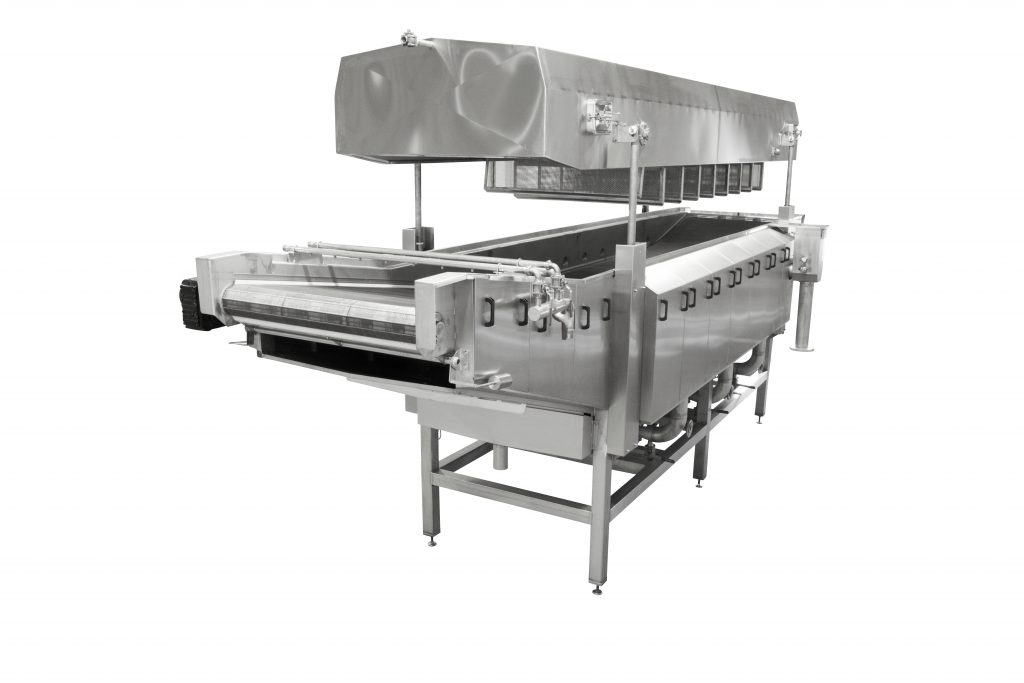11 January, 2021
Why Do We Blanch Cut Potato Slices?
The process of producing high-quality potato products includes a lot of different steps and one of them is blanching. The most important factor to reach the result of high-quality potato product is of course the quality of the potato you are working with, since it will decide what type of product you can produce. In this article, we answer why we recommend blanching cut potato products before they are sent to the fryer.
Reasons for Blanching
The reason why we recommend blanching potato slices is to reduce the level of sugar. Low levels of sugar in the potato product will generate a bright and yellow color with no brown surface. It is also an important condition to avoid acrylamide levels to raise. Another reason for blanching is to inactivate enzymes to minimize the risk for other discoloration.
In the best of worlds, the producer can always work with excellent raw material, meaning a potato with high dry matter (>20%) and low levels of sugar (glucose and fructose) >0,1%. If this dream scenario can be guaranteed, the producer can avoid the blanching step in the process.
Unfortunately, high quality potato products cannot always be secured for several reasons. Something might have happened with the storage conditions, you have changed your supplier, sugar levels will vary depending on the season, etc. We argue that the blancher is your guarantee for producing high-quality potato chips, balancing the raw material variations. In northern Europe for instance, it is quite normal to utilize the blanching step during October to May when sugar levels might be higher than during the period with fresh potatoes.
Success Factors for Perfect Blanching
You need to reach a blanching temperature of >80°C to melt the potato cell walls, to leak out sugars. It is crucial to raise the temperature of the product as fast as possible. Ideal is to control the temperature in the blancher in two or more zones for optimal regulation of the potato products’ condition.
Fresh water is needed to leak out sugar. For example, in 0,2 % sugar content you will need at least 1 m³ of fresh water to reduce the level to 0,1 %. It is important to keep the slices apart and to treat every slice with uniformly with temperature and time.
To avoid a loss of crispiness and a taste reduction, you need to limit the time for blanching. Over-blanched slices tend to lose crispiness and taste once they are fried, since you will also leak starch. Keep an eye to reach the suitable time for blanching.

Alternatives to Blanching
As mentioned earlier, the most common alternative to blanching is to by-pass the blancher during the periods when you have high-quality potatoes. There is also another technology available, Pulse Electric Field (PEF), which you can install before the slicer. PEF hits the potato with high voltage electricity to break down cell walls in the potato. By doing this, sugar can be leaked out during the slice washing procedure. PEF can be used as complimentary technology to blanching, but will not replace the need for blanching entirely.
Conclusion
In summary, blanching is a great way to ensure high-quality potato products throughout the year and will enable you to balance the variations in quality of the raw material. So, good luck with your blanching process! If you need any advice on what equipment to install or how to set your process parameters, do not hesitate to contact us at Rosenqvists Food Technologies.



